Maged Elkashlan
FAS-ARIS: Turning Multipath Challenges Into Localization Opportunities
Sep 15, 2025Abstract:Traditional single-input single-output (SISO) systems face fundamental limitations in achieving accurate three-dimensional (3D) localization due to limited spatial degrees of freedom (DoF) and the adverse impact of multipath propagation. This paper proposes a novel fluid antenna system (FAS)-active reconfigurable intelligent surface (ARIS) framework that transforms multipath effects from a hindrance into a resource for enhanced localization. By synergistically combining the signal amplification capabilities of ARIS with the spatial diversity enabled by FAS, the proposed system achieves robust 3D user equipment (UE) positioning -- without relying on auxiliary information such as time-of-arrival (ToA) or frequency diversity. The system exploits both line-of-sight (LoS) and non-line-of-sight (NLoS) components through a tailored signal decoupling strategy. We design novel UE pilot sequences and ARIS phase configurations to effectively separate LoS and NLoS channels, enabling independent parameter estimation. A multi-stage estimation algorithm is then applied: the multiple signal classification (MUSIC) algorithm estimates angle-of-arrival (AoA) from the direct path, while maximum likelihood estimation with interior-point refinement recovers cascaded channel parameters from the reflected path. Finally, geometric triangulation using least-squares estimation determines the UE's 3D position based on the extracted AoA information. Comprehensive performance analysis, including the derivation of Cram\'{e}r-Rao bounds for both channel and position estimation, establishes theoretical benchmarks. Simulation results confirm that the proposed FAS-ARIS framework achieves near-optimal localization accuracy while maintaining robustness in rich multipath environments -- effectively turning conventional localization challenges into advantages.
Dynamic Resource Allocation in Distributed MIMO-LEO Satellite Networks
May 27, 2025Abstract:This paper characterizes the impacts of channel estimation errors and Rician factors on achievable data rate and investigates the user scheduling strategy, combining scheme, power control, and dynamic bandwidth allocation to maximize the sum data rate in the distributed multiple-input-multiple-output (MIMO)-enabled low earth orbit (LEO) satellite networks. However, due to the resource-assignment problem, it is challenging to find the optimal solution for maximizing the sum data rate. To transform this problem into a more tractable form, we first quantify the channel estimation errors based on the minimum mean square error (MMSE) estimator and rigorously derive a closed-form lower bound of the achievable data rate, offering an explicit formulation for resource allocation. Then, to solve the NP-hard problem, we decompose it into three sub-problems, namely, user scheduling strategy, joint combination and power control, and dynamic bandwidth allocation, by using alternative optimization (AO). Specifically, the user scheduling is formulated as a graph coloring problem by iteratively updating an undirected graph based on user requirements, which is then solved using the DSatur algorithm. For the combining weights and power control, the successive convex approximation (SCA) and geometrical programming (GP) are adopted to obtain the sub-optimal solution with lower complexity. Finally, the optimal bandwidth allocation can be achieved by solving the concave problem. Numerical results validate the analytical tightness of the derived bound, especially for large Rician factors, and demonstrate significant performance gains over other benchmarks.
Latency-Aware Resource Allocation for Integrated Communications, Computation, and Sensing in Cell-Free mMIMO Systems
Feb 24, 2025



Abstract:In this paper, we investigate a cell-free massive multiple-input and multiple-output (MIMO)-enabled integration communication, computation, and sensing (ICCS) system, aiming to minimize the maximum computation latency to guarantee the stringent sensing requirements. We consider a two-tier offloading framework, where each multi-antenna terminal can optionally offload its local tasks to either multiple mobile-edge servers for distributed computation or the cloud server for centralized computation while satisfying the sensing requirements and power constraint. The above offloading problem is formulated as a mixed-integer programming and non-convex problem, which can be decomposed into three sub-problems, namely, distributed offloading decision, beamforming design, and execution scheduling mechanism. First, the continuous relaxation and penalty-based techniques are applied to tackle the distributed offloading strategy. Then, the weighted minimum mean square error (WMMSE) and successive convex approximation (SCA)-based lower bound are utilized to design the integrated communication and sensing (ISAC) beamforming. Finally, the other resources can be judiciously scheduled to minimize the maximum latency. A rigorous convergence analysis and numerical results substantiate the effectiveness of our method. Furthermore, simulation results demonstrate that multi-point cooperation in cell-free massive MIMO-enabled ICCS significantly reduces overall computation latency, in comparison to the benchmark schemes.
From Partial Calibration to Full Potential: A Two-Stage Sparse DOA Estimation for Incoherently-Distributed Sources with Gain-Phase Uncertainty
Jan 28, 2025

Abstract:Direction-of-arrival (DOA) estimation for incoherently distributed (ID) sources is essential in multipath wireless communication scenarios, yet it remains challenging due to the combined effects of angular spread and gain-phase uncertainties in antenna arrays. This paper presents a two-stage sparse DOA estimation framework, transitioning from partial calibration to full potential, under the generalized array manifold (GAM) framework. In the first stage, coarse DOA estimates are obtained by exploiting the output from a subset of partly-calibrated arrays (PCAs). In the second stage, these estimates are utilized to determine and compensate for gain-phase uncertainties across all array elements. Then a sparse total least-squares optimization problem is formulated and solved via alternating descent to refine the DOA estimates. Simulation results demonstrate that the proposed method attained improved estimation accuracy compared to existing approaches, while maintaining robustness against both noise and angular spread effects in practical multipath environments.
Towards Intelligent Antenna Positioning: Leveraging DRL for FAS-Aided ISAC Systems
Jan 02, 2025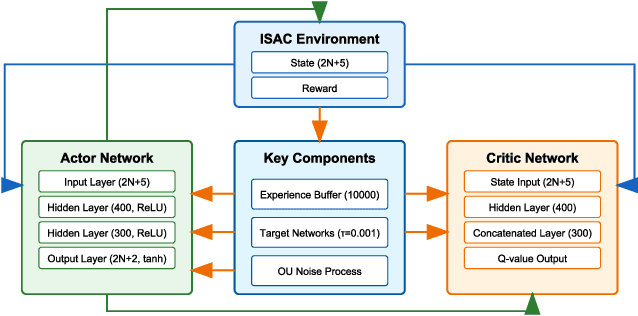
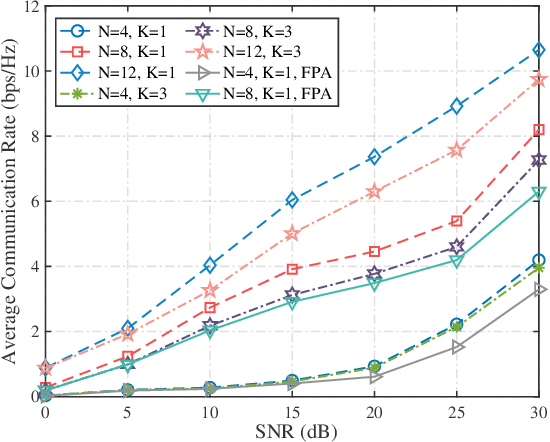
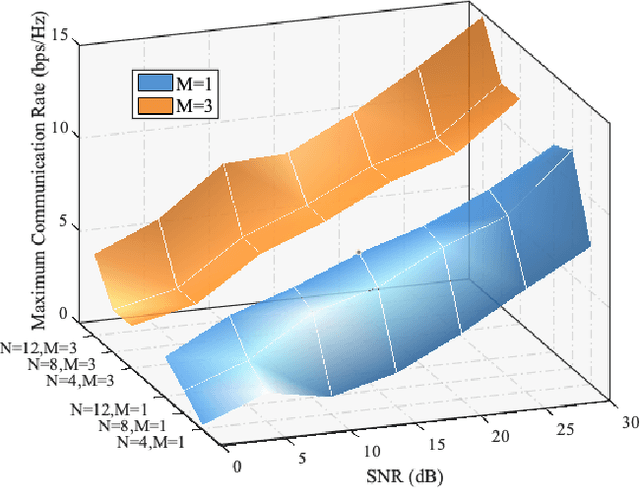
Abstract:Fluid antenna systems (FAS) enable dynamic antenna positioning, offering new opportunities to enhance integrated sensing and communication (ISAC) performance. However, existing studies primarily focus on communication enhancement or single-target sensing, leaving multi-target scenarios underexplored. Additionally, the joint optimization of beamforming and antenna positions poses a highly non-convex problem, with traditional methods becoming impractical as the number of fluid antennas increases. To address these challenges, this letter proposes a block coordinate descent (BCD) framework integrated with a deep reinforcement learning (DRL)-based approach for intelligent antenna positioning. By leveraging the deep deterministic policy gradient (DDPG) algorithm, the proposed framework efficiently balances sensing and communication performance. Simulation results demonstrate the scalability and effectiveness of the proposed approach.
Rethinking Hardware Impairments in Multi-User Systems: Can FAS Make a Difference?
Dec 20, 2024



Abstract:In this paper, we analyze the role of fluid antenna systems (FAS) in multi-user systems with hardware impairments (HIs). Specifically, we investigate a scenario where a base station (BS) equipped with multiple fluid antennas communicates with multiple users (CUs), each equipped with a single fluid antenna. Our objective is to maximize the minimum communication rate among all users by jointly optimizing the BS's transmit beamforming, the positions of its transmit fluid antennas, and the positions of the CUs' receive fluid antennas. To address this non-convex problem, we propose a block coordinate descent (BCD) algorithm integrating semidefinite relaxation (SDR), rank-one constraint relaxation (SRCR), successive convex approximation (SCA), and majorization-minimization (MM). Simulation results demonstrate that FAS significantly enhances system performance and robustness, with notable gains when both the BS and CUs are equipped with fluid antennas. Even under low transmit power conditions, deploying FAS at the BS alone yields substantial performance gains. However, the effectiveness of FAS depends on the availability of sufficient movement space, as space constraints may limit its benefits compared to fixed antenna strategies. Our findings highlight the potential of FAS to mitigate HIs and enhance multi-user system performance, while emphasizing the need for practical deployment considerations.
Fluid Antenna Systems Enabling 6G:Principles, Applications, and Research Directions
Dec 05, 2024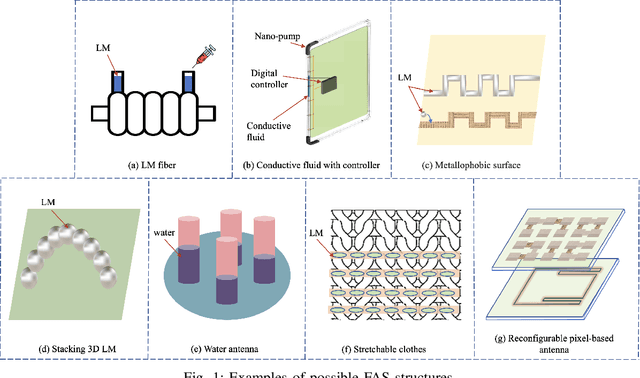
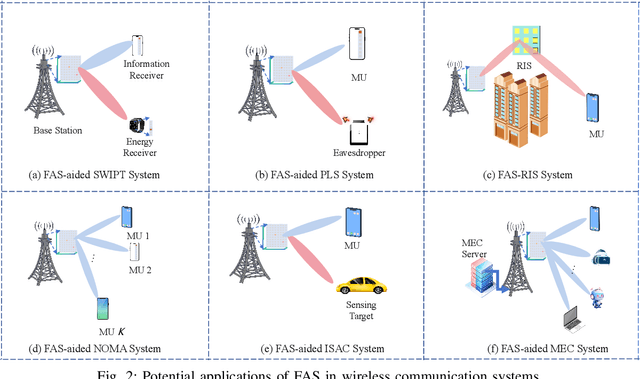
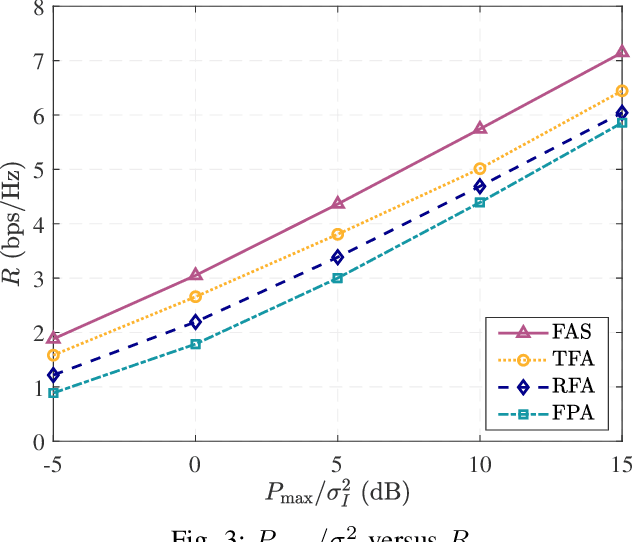
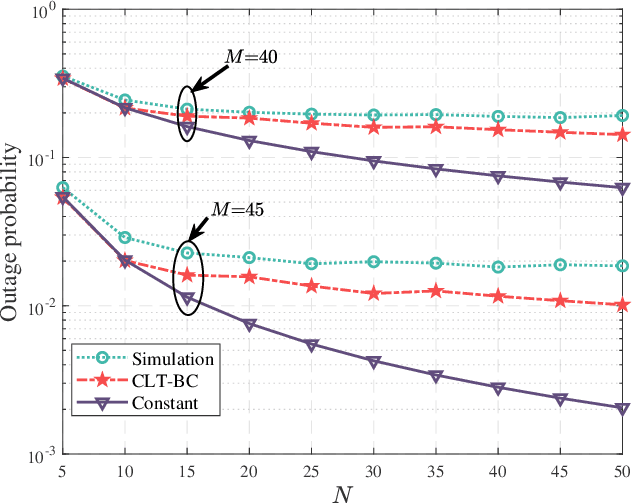
Abstract:Fluid antenna system (FAS) as a new version of reconfigurable antenna technologies promoting shape and position flexibility, has emerged as an exciting and possibly transformative technology for wireless communications systems. FAS represents any software-controlled fluidic, conductive or dielectric structure that can dynamically alter antenna's shape and position to change the gain, the radiation pattern, the operating frequency, and other critical radiation characteristics. With its capability, it is highly anticipated that FAS can contribute greatly to the upcoming sixth generation (6G) wireless networks. This article substantiates this thought by addressing four major questions: 1) Is FAS crucial to 6G? 2) How to characterize FAS? 3) What are the applications of FAS? 4) What are the relevant challenges and future research directions? In particular, five promising research directions that underscore the potential of FAS are discussed. We conclude this article by showcasing the impressive performance of FAS.
FAS-Driven Spectrum Sensing for Cognitive Radio Networks
Nov 13, 2024

Abstract:Cognitive radio (CR) networks face significant challenges in spectrum sensing, especially under spectrum scarcity. Fluid antenna systems (FAS) can offer an unorthodox solution due to their ability to dynamically adjust antenna positions for improved channel gain. In this letter, we study a FAS-driven CR setup where a secondary user (SU) adjusts the positions of fluid antennas to detect signals from the primary user (PU). We aim to maximize the detection probability under the constraints of the false alarm probability and the received beamforming of the SU. To address this problem, we first derive a closed-form expression for the optimal detection threshold and reformulate the problem to find its solution. Then an alternating optimization (AO) scheme is proposed to decompose the problem into several sub-problems, addressing both the received beamforming and the antenna positions at the SU. The beamforming subproblem is addressed using a closed-form solution, while the fluid antenna positions are solved by successive convex approximation (SCA). Simulation results reveal that the proposed algorithm provides significant improvements over traditional fixed-position antenna (FPA) schemes in terms of spectrum sensing performance.
Unlocking FAS-RIS Security Analysis with Block-Correlation Model
Nov 03, 2024



Abstract:In this letter, we investigate the security of fluid antenna system (FAS)-reconfigurable intelligent surfaces (RIS) communication systems. The base station (BS) employs a single fixed-position antenna, while both the legitimate receiver and the eavesdropper are equipped with fluid antennas. By utilizing the block-correlation model and the central limit theorem (CLT), we derive approximate expressions for the average secrecy capacity and secrecy outage probability (SOP). Our analysis, validated by simulation results, demonstrates the effectiveness of the block-correlation model in accurately assessing the security performance. Moreover, simulation results reveal that FAS-RIS system significantly outperforms other systems in terms of security, further underscoring its potential in secure communication applications.
A Framework of FAS-RIS Systems: Performance Analysis and Throughput Optimization
Jul 11, 2024



Abstract:In this paper, we investigate reconfigurable intelligent surface (RIS)-assisted communication systems which involve a fixed-antenna base station (BS) and a mobile user (MU) that is equipped with fluid antenna system (FAS). Specifically, the RIS is utilized to enable communication for the user whose direct link from the base station is blocked by obstacles. We propose a comprehensive framework that provides transmission design for both static scenarios with the knowledge of channel state information (CSI) and harsh environments where CSI is hard to acquire. It leads to two approaches: a CSI-based scheme where CSI is available, and a CSI-free scheme when CSI is inaccessible. Given the complex spatial correlations in FAS, we employ block-diagonal matrix approximation and independent antenna equivalent models to simplify the derivation of outage probabilities in both cases. Based on the derived outage probabilities, we then optimize the throughput of the FAS-RIS system. For the CSI-based scheme, we first propose a gradient ascent-based algorithm to obtain a near-optimal solution. Then, to address the possible high computational complexity in the gradient algorithm, we approximate the objective function and confirm a unique optimal solution accessible through a bisection search method. For the CSI-free scheme, we apply the partial gradient ascent algorithm, reducing complexity further than full gradient algorithms. We also approximate the objective function and derive a locally optimal closed-form solution to maximize throughput. Simulation results validate the effectiveness of the proposed framework for the transmission design in FAS-RIS systems.
 Add to Chrome
Add to Chrome Add to Firefox
Add to Firefox Add to Edge
Add to Edge